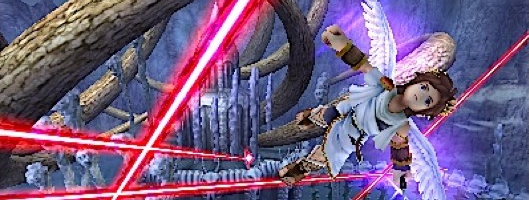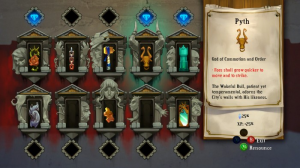Today’s post looks at a rarely used form of difficulty design in the form of sculptable difficulty. We have seen games with the option to alter the difficulty during play, but sculptable difficulty takes things further and allows the player to create the challenge they’re looking for.
Setting the Difficulty:
Sculptable difficulty means that the player is free to alter the difficulty and be rewarded for it. This is not the same as subjective difficulty, or where the game’s difficulty is dependent on the player’s skills. Instead, the player is able to alter the difficulty in different ways to impact the difficulty.
Games that feature sculptable difficulty typically have a combination of player skill and abstracted design, as you need to have multiple ways to challenge the player and impact the play.
In games designed this way, there is always a “baseline” experience that the game is built around. From there, the player can raise or lower the difficulty to make the game easier or harder in different ways. The important factor about sculptable difficulty is the fact that the player controls the difficulty beyond just stat changes, but impacts how the game is played.
In this way, players can make a game easier if they’re having a tough time, or harder if they want to push things, as our examples will demonstrate.
Balancing the Scales:
The examples that I want to talk about today are some of my favorite games in recent years. The first is my long-time favorite The World Ends With You. I’ve talked about it multiple times, so I don’t want to repeat myself too much.
The game allows you to impact the difficulty based on the setting, the number of enemy groups you’ll fight and your max health going in. These factors determine how much experience and money you get, the chance of getting different items and their quality.
The player can change these settings at any time outside of combat. There is a baseline that the player can keep to, but they are always tempted to make things harder for greater rewards.
Bastion takes things further with specific difficulty totems that change the game for each one used. These totems impact the enemies and alter their abilities during play.
The more totems active, the more experience the player gets. There is a big difference between playing Bastion without the totems vs. having all 10 on. The follow up from Super Giant Games Transistor also allows you to alter the difficulty.
Our final example is Kid Icarus Uprising who literally has a difficulty scale between zero and nine. The harder the player makes the game, the higher quality in terms of weapons they’ll find.
The game opens up extra hard paths with more rewards if the player is playing at or higher than the difficulty rating.
With those examples said, we can turn to the challenges of designing a game in such a matter.
Designing Difficulty:
You can tell the difference between developers who think about the game’s difficulty setting as part of the design, and those that rush through it. The games that work have difficulty settings balanced with the experience. The ones that don’t typically feature difficulty scaled so far up that it makes the game a slog to play through.
To create a game around sculptable difficulty, you must include your difficulty settings/conditions in the game’s design. The more varied ways you can adjust the difficulty, the better. Not every game can be designed around sculptable difficulty.
Games built on only player skill, such as platformers, aren’t good candidates for sculptable difficulty. The reason is that there must be abstracted elements to modify.
Looking at games like Bastion and Kid Icarus Uprising, they both have a baseline or normal play. You must get the baseline set before you begin designing modifiers. This point should be obvious, but needs to be said: Your game should be beatable with any and all modifiers on. Try not to have modifiers on top of set difficulty values, as that can add complexity on top of complexity.
Our final point goes back to the rewards. There must be a reason beyond just recognition for modifying the game. This serves two purposes.
First, it allows expert players to get something in return for making the game harder. And second, it gives newer players a reason to improve and see more of the game and get rewarded at the same time.
Getting it Just Right:
Sculptable difficulty is one of those elements that has to be a part of your design from the very start and integrated in. Even though it won’t fit in every game design or genre, it can certainly elevate a game’s design when it works.
Besides the games mentioned, can you think of other examples of games that featured sculptable difficulty? If so, be sure to leave a comment about them below.
If you enjoyed this post, please consider donating to the Game-Wisdom Patreon campaign. Your donations can help keep things going and allow me to produce more great content. Follow me on Twitter @GWBycer, and you can find daily video content on the Game-Wisdom YouTube channel.



